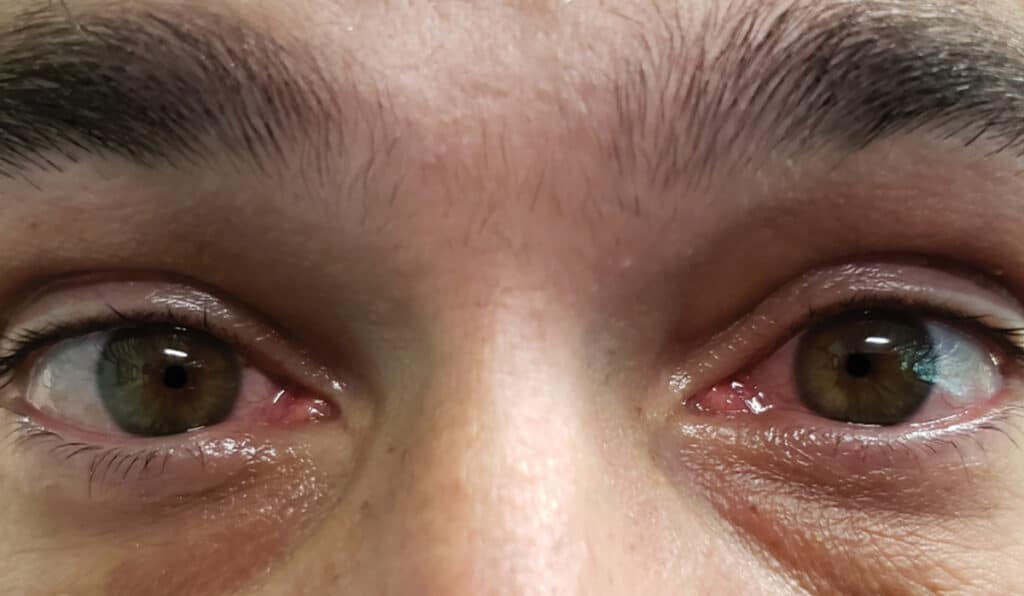The biggest fear in the life of a welder is probably going blind. There are many floating statements like welding can make you permanently blind and reduce your life expectancy – but does it?
The brightness, glare, UV rays, fumes, and infrared rays produced during welding are very dangerous for the eyes. Direct exposure to these welding constraints can really make you blind. But, the insistent part here is, ‘direct exposure’!
Although welding can make welders blind, with the right precautions (like wearing auto-darkening welding helmets and ANSI-approved welding goggles) and periodic eye checkups, you can protect your eyes.
If you’re a reasonable welder who doesn’t ignore the importance of wearing modern welding gear to protect your eyes, you will not go blind permanently, EVER! Yet, there’s still a creeping silence on whether or not modern gears can protect the eyes completely.
Since we know that welding has a lot of risks and the effects on the eyes (overall health, in general) can give anybody sleepless nights, we have curated this guide.
It will give you a detailed insight on what are the long-term effects of welding on the eyes, can welding really make you blind, and much more. Dive in for all the answers.
What Causes Eye Problems in Welding – Should You Quit?
Welding is of many types: Stick welding, MIG welding, and TIG welding are the most popular types. Despite the differences, the byproducts of welding remain constant. Those toxic and harmful byproducts are the culprits behind eye problems caused due to welding.
Here’s a list of what causes blindness and other problems due to welding:
-
-
- UV rays (UVA, UVB, and UVC).
- Glare and brightness.
- Fumes.
- Heat.
- Infrared rays.
-
No matter the type of welding you do, no matter whether you carry it out indoors or outdoors, all these byproducts will still be produced. If your eyes are exposed to them directly, you might go blind over time.
Instead of getting scared and quitting, you should wear proper PPE and carry out your business safely. After all, welding is a lucrative job in America that pays very well. Why leave it when you can protect yourself?
What are the long term effects of welding on the eyes – Can welding make you permanently blind?
Did you know that even a minuscule window of fewer than 5 seconds is enough to cause intense pain if you look at welding directly (or through cheap-quality goggles, that too, without wearing an auto-darkening helmet) when the arc is struck?
The temperature of the welding arc can be anywhere between 6500 degrees Fahrenheit to 10000 degrees Fahrenheit.
Considering the fact that you’re going to be less than a foot away, can you imagine the brightness and heat your eyes will be suddenly exposed to in such intense conditions?
So, yes, a precarious attitude and absolute ignorance towards the importance of wearing proper PPE before you start to weld will make you blind without a doubt.
Aside from blindness, welding can affect your eyes in many other ways. Let’s find out what those effects are.
-
-
- Photokeratitis.
- Welder’s flash.
- Temporary blindness.
- Dryness, redness, and itching.
- Damage to the retina (this can cause complete or partial blindness).
- Flash burns.
- Color vision deficiency.
- Blurred vision.
-
Blue light is potentially the most critical hazard because it can make you permanently blind over time. You can’t ignore flying sparks either. If those sparks hit your eyes directly, they will damage the retina. The result can again be blindness.
Photokeratitis in welders – what is it?
Photokeratitis is also known as ultraviolet keratitis. Clearly, it’s a kind of eye condition that’s caused due to UV exposure. It affects the cornea and that results in intense pain that can last for up to 2 days.
The most common symptoms of photokeratitis due to welding are as follows.
-
-
- Constant watering accompanied by intense pain.
- Twitching of eyelids.
- Redness.
- Extreme discomfort in the presence of bright light.
- Squinting of eyes when exposed to light.
- Constricted pupils.
- Blurry vision.
-
If UV rays from the welding arc reach your eyes, you’ll suffer from photokeratitis. Although it won’t make you permanently blind, it will still compromise your vision temporarily.
If you have it, don’t try to treat it at home. You require medical assistance to ensure that the condition doesn’t prolong.
Depending on the extent of discomfort, a doctor might prescribe oral pain killers and antibiotic eye drops to treat an arc eye.
You can certainly use cold packs for relief, but that doesn’t mean you should skip seeing an ophthalmologist.
What is a welder’s flash – How do you treat a welder’s flash?
Also known as arc eye, a welder’s flash occurs when your eyes are exposed to UV rays from the electrical arc. It affects the cornea.
The only difference between photokeratitis and welder’s flash is that whilst the former can happen due to exposure to sunlight as well, the latter is caused only by welding.
At times, photokeratitis is also called welder’s flash when it occurs due to welding.
The symptoms are the same as listed in the aforementioned section and the treatment methods are also the same.
How far can welding hurt your eyes?
Now that you know the dangers of welding and how it can affect your vision, you might be interested to know how far welding can hurt your eyes. If yes, the following pointers will segregate facts from myths. Have a look!
1.) Radiations (especially UV rays) from the welding arc can easily travel up to 50 feet. Anything less than 50 feet can damage your eyes.
2.) You need to be just 10 meters away from the welding stick without protective gear, and that’s enough to cause eye damage.
5 Most effective Solutions to Reduce Welding Effects on Eyes – Can you treat a welder’s flash at home?
Whilst there’s no harm in using cooling pads or used, refrigerated tea bags to cool down the inflammation, don’t ever replace a doctor’s treatment with home remedies.
It’s quite possible that your eyes might have been exposed to debris alongside bright light and rays. Only a doctor can figure out the extent of damage and then prescribe a treatment plan accordingly.
On that note, let’s now explore the 5 ways to reduce the effects of welding on the eyes.
1.) Use antibiotic eye drops as prescribed by your doctor.
2.) Take painkillers if prescribed.
3.) Wear only ANSI-approved welding helmets. The solar welding helmets with batteries are the best options.
4.) Always take a shower immediately after welding.
5.) Wash your eyes with cold water immediately if your eyes were accidentally exposed to sparks while you weren’t wearing a welding helmet.
FAQs
Does welding cause permanent eye damage?
Yes and no, both.
Yes, welding will cause permanent eye damage if you do not wear protection gears to safeguard your eyes from fumes, heat, and radiation.
On the other hand, if you are wearing ANSI-approved welding helmets and goggles, you will not go blind.
Can welding cause eye floaters?
Indeed, yes. UV rays aren’t the only dangers of welding. Intense light is equally harmful. If you look at the centre of the electric arc, it will leave you with dark spots. Those dark spots are what you call eye floaters in layman terms.
How long does it take to get eye damage from welding?
The real symptoms of the welder’s flash will take up to 6 hours to appear. Sometimes, the first symptom might not appear for 12 hours.
The only good news is that the welder’s flash isn’t permanent. With the right treatment, it gets cured within 2 days.
How long does welding blindness last?
Probably, for a couple of minutes. When you’re exposed to bright light, your eyes will absorb the heat and radiation that will make you blinded for 2 minutes to be precise.
Can welding damage your eyes even if you are wearing a hood?
If you’re worried that you can go permanently blind even if you wear a high-quality hood, then that’s not going to happen.
However, certain loopholes can damage your eyes in the long run even if you wear the best quality hood.
Let’s find out what are those loopholes that can cause damage to your eyes despite wearing protective gear.
• The shade provided by the helmet isn’t sufficiently dark.
• You’re not wearing the helmet properly and there are gaps.
• The welding helmet is cracked or damaged.
• You don’t visit an ophthalmologist from time to time.
Bear in mind, no matter if you wear the best protective gear, it is still advisable to visit an eye specialist timely just to be sure.
Do welders have a shorter lifespan?
Not necessarily. Although it cannot be overruled that welding is dangerous. Other than impacting your eyes and compromising your vision, it can also cause cancer. But, if you take precautions, your life will not be cut short.
Concluding Thoughts:
Many Americans work as welders despite it being risky because welding is a high-paying job. Yet, it’s oddly unsettling to know that welding can make you permanently blind. That however doesn’t happen to everybody.
As long as you’re an aware responsible welder who doesn’t compromise with the quality of the welding helmet you wear, you won’t go blind. Period!
There might be instances where you accidentally get a welder’s flash. But the welder’s flash isn’t permanent. You just have to be careful while welding to make sure no permanent damage happens.








